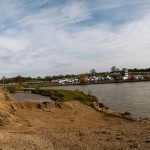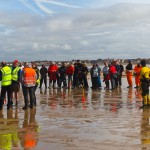Panoramic photography if I’m honest it is my secret pleasure!
Panoramic photography never used to be something I paid any attention though. I always thought that panoramic photography was far too fiddly and time consuming. Add to that that the thought of needing specialist kit like tripods and heads it was something I was pretty keen to avoid!
But, and here it is, its a lesson in not believing everything you read! You don’t need all that stuff, unless of course its your bread and butter and you can justify spending the ££’s then that’s fine. But I’m a press and PR photographer and I cant so I have to make do with what I have and my available subject matter. I increasingly find myself out on an assignment shooting a set of frames specifically thinking about a panoramic.
I mean a good panoramic is just nice to look at, isn’t it?
There just something about the above image that to me is just ‘nice’ and I suppose that’s why I like Panoramic Photography. Some people will say ‘but hey, you can get that effect from a nice frame with a wide angle lens’ and yes you can but you venture into the realms of distortion and absurdly shaped people. However a word to the wise, you can go over board with a panoramic especially if you shoot wide. Below is a great shot which would have been better shooting a little less wide so the balloons are, well round looking!!
However sometimes that just the effect your looking for.
So here’s how I do it. I always, always shoot upright. Otherwise you’ll end up with such a narrow and wide final image it will be painful to look at it! I find at least 6 frames make for a decent final image. Make sure you keep the exposure even (I’m not going to tell you how to expose a picture) and have a landscape appropriate aperture. Then in post I use PS to stitch it all together. I think its important to have a point of focus, for example:
There is also a technique called the Brenizer Method developed by american wedding tog Ryan Brenizer. I think its a missed panoramic technique as you shoot in the same way the only difference is that you use a shallow DOF and shoot more of a grid but the wide effect with a point of focus is still the final target. Yes Ryan has developed it as a portrait thing as you end up with a such a super small DOF but there are a lot of similarities, and the possibilities are endless!
In ten years the only panoramic I can remember being published is this one I shot and added as an afterthought for the KM group an assignment on the National Trust property South Foreland Lighthouse and made a very nice 2 page spread in the paper a couple of weeks ago.
If you perfect the technique it is possible to get a group of people into one, which believe me isn’t as easy as it sounds
Anyway that’s enough of my guilty photographic pleasure. I think every photographer both amateur and professional alike ought to have one and now mine is out in the open. Have a go. I’d like to to see the results you might get.
So in finishing here’s a few more of my favorites:
- Lydden Hill Race Circuit
- Mallory Park Race Circuit
- The resevoir at Vinuella southern Spain
- Car Feature – abandoned factory, Bristol
- Elevated view of the paddock and track of Lyyden Hill Race Circuit during the RallyRX 1 2013
- Noel Cowards house St Margrates at Cliffe, Kent
- Volley Ball England Beach Volley Ball Finals. Margate, Kent
- European Class 8 Kite buggy Championships, Hoylake
































